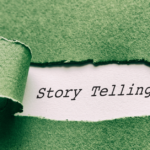Writing for children is one of the most challenging and rewarding forms of storytelling. It requires a delicate balance of simplicity and depth, entertainment and education.
Children are incredibly discerning readers with an innate ability to spot insincerity and a voracious appetite for stories that resonate with their experiences and dreams.
Let’s explore the magical realm of children’s literature and explore how to craft stories that will captivate young readers and stand the test of time.
Understanding Your Audience
Before putting pen to paper, it’s crucial to understand who you’re writing for. Children’s cognitive abilities and interests vary dramatically across different age groups.
What fascinates a five-year-old might bore a ten-year-old to tears.
Age-Appropriate Content
For the youngest readers (ages 2-5), focus on simple concepts, bright imagery, and repetitive phrases. These stories should be short, with clear, uncomplicated plots.
As you move up to early readers (ages 6-8), you can introduce more complex narratives and characters, but still keep the language accessible.
Middle-grade readers (ages 9-12) are ready for more sophisticated themes and longer stories. They’re developing critical thinking skills and can handle more nuanced characters and plot twists.
Attention Span Considerations
A child’s attention span is typically their age plus two minutes. So, a six-year-old might stay engaged for about eight minutes.
Structure your story accordingly, using pacing and chapter breaks to maintain interest.
Crafting Your Story
Character Development
Create characters that children can relate to and root for. Your protagonist should have clear goals and face obstacles that resonate with your readers.
Give your characters flaws – perfect characters are boring and unrealistic.
Children often prefer protagonists who are slightly older than themselves. This gives them someone to look up to and aspire to be like.
For example, if you’re writing for 8-year-olds, consider making your main character 10 or 11.
Plot Structure
Even short stories need a solid structure. Use the classic three-act structure as a guide:
- Introduction: Set the scene and introduce the main character and their world.
This is where you establish the normal day-to-day life of your protagonist before the adventure begins.
- Conflict: Present a problem or challenge for the protagonist to overcome.
This could be an external threat, an internal struggle, or a combination of both.
The conflict should be age-appropriate and relatable to your target audience.
- Resolution: Show how the character grows or changes to decide the conflict.
This doesn’t always mean a happily-ever-after ending, but it should provide a sense of closure and satisfaction.
For example, in a story for 7-year-olds about overcoming fear of the dark, your structure might look like this:
- Introduction: Meet Sarah, a brave 9-year-old who loves adventures… except when it’s dark.
- Conflict: Sarah’s nightlight breaks right before a big camping trip.
- Resolution: Sarah learns to find courage within herself and discovers the beauty of the night sky.
Engaging Opening
Hook your readers from the first sentence. Start with action, dialogue, or an intriguing question.
Here are some examples:
- “The day Jimmy’s socks came to life was the day everything changed.”
- “‘Dragons don’t exist,’ Lily said. And then she saw one in her backyard.”
- “Have you ever wondered what your toys do when you’re not looking?”
These openings immediately spark curiosity and invite the reader into the story world.
Pacing
Vary the pace of your story to keep readers engaged. Use short, punchy sentences for exciting moments and longer, more descriptive passages for quieter scenes. This rhythm helps maintain interest and reflects the emotional tone of different parts of the story.
For instance, during a chase scene:
“Max ran. His heart pounded. The monster’s footsteps grew louder. Closer. He had to hide. Now!”
Contrast this with a calmer moment:
“In the quiet of her treehouse, Emma watched the sunset paint the sky in shades of pink and orange. The gentle breeze carried the scent of blooming flowers, and she felt at peace for the first time that day.”
Language and Style
Vocabulary
Introduce new words in context. Children love learning new vocabulary when it’s presented in an engaging way.
Instead of saying “The bird flew quickly,” you might write, “The sparrow darted through the air, it’s wings a blur of motion.”
When introducing a new word, consider following it with a brief explanation or context clue. For example:
“The caterpillar began it’s metamorphosis, changing from a crawling bug into a beautiful butterfly.”
Descriptive Language
Use vivid, sensory language to bring your story to life. Describe not just what things look like, but how they sound, smell, feel, and even taste.
This helps children fully immerse themselves in the story world.
For example:
“The old house creaked and groaned like a grumpy giant. Dust tickled Tommy’s nose, and the floorboards felt rough under his bare feet. In the kitchen, the smell of Grandma’s apple pie made his mouth water.”
Dialogue
Dialogue should sound natural and age-appropriate. It’s a great tool for revealing character and moving the plot forward.
Avoid long speeches – instead, use short, snappy exchanges that children can easily follow.
Here’s an example of engaging dialogue for a middle-grade story:
“I can’t believe you did that!” Sarah whispered.
“Did what?” Jack asked, trying to look innocent.
“You know what. The thing with the frog.”
Jack grinned. “Oh, that. Pretty cool, huh?”
Sarah rolled her eyes. “If by ‘cool’ you mean ‘totally gross,’ then yeah.”
Themes and Messages
Moral Lessons
Many children’s stories include subtle moral lessons, but it’s important not to be heavy-handed. Let the message emerge naturally from the story’s events as opposed to stating it explicitly.
For instance, in a story about a child learning to share, you might show the protagonist experiencing the joy of playing together after initially refusing to share their toys.
The lesson about the benefits of sharing comes through the character’s experience, not through a lecture.
Emotional Connection
Stories that resonate emotionally with children are the ones they’ll remember. Explore complex emotions in a way that’s relatable and reassuring.
For example, in a story about moving to a new town, you might write:
“As the car pulled away from their old house, Mia felt a mix of excitement and sadness swirling in her stomach. She was looking forward to new adventures, but she would miss her friends terribly. It was okay to feel both things at once, she realized.”
Visual Elements
Illustrations
Even if you’re not an illustrator yourself, consider how your words might be complemented by images. Leave room in your narrative for visual storytelling.
Describe key scenes in a way that lends itself to illustration.
For example:
“The dragon’s scales shimmered like rainbows as it unfurled it’s enormous wings. Each wing was as big as a sail on a pirate ship, and when the dragon flapped them, the trees in the forest swayed as if caught in a strong wind.”
This description gives an illustrator plenty to work with while also painting a vivid picture in the reader’s mind.
Storyboarding
Before you start writing, try creating a storyboard. This visual outline can help you see the flow of your narrative and confirm you have a good balance of action and quieter moments.
Divide your story into key scenes and sketch out rough illustrations or write brief descriptions for each. This process can help you identify pacing issues or spots where the story might drag.
Editing and Refining
Read Aloud
Always read your story aloud. This helps you catch awkward phrasing and confirms your story has a good rhythm for reading to children.
Pay attention to:
- How the words flow together
- Where you naturally pause
- Any tongue-twisters or difficult-to-pronounce combinations
Feedback
Get feedback from your target audience. Read your story to children in the age group you’re writing for and pay attention to their reactions.
Where do they laugh?
Where do they lose interest?
Consider creating a simple questionnaire for older children:
- Who was your favorite character and why?
- What was the most exciting part of the story?
- Was there anything you didn’t understand?
- If you could change one thing about the story, what would it be?
Embracing Diversity
Cultural Representation
Include diverse characters and settings in your stories. This reflects the world children live in and helps foster empathy and understanding.
Consider:
- Characters from various ethnic backgrounds
- Different family structures
- Characters with disabilities
- Urban, suburban, and rural settings
Remember to do your research and avoid stereotypes. If you’re writing about a culture that’s not your own, consider having sensitivity readers review your work.
Gender Representation
Challenge gender stereotypes in your writing. Show boys and girls in a variety of roles and avoid limiting characters based on traditional gender expectations.
For example:
- A story about a boy who loves ballet
- A girl who’s passionate about science and inventing
- A non-binary child navigating friendships and self-expression
Interactive Elements
Consider how your story might incorporate interactive elements, especially if you’re writing for digital platforms. This could include choose-your-own-adventure style narratives or simple activities related to the story.
Ideas for interactive elements:
- Puzzles that help the protagonist solve a mystery
- Decisions points where readers choose what the character does next
- Simple games or activities that reinforce the story’s themes
- Questions that encourage readers to imagine themselves in the story
The Importance of Imagination
Let your imagination run wild. Children’s literature allows for endless possibilities.
Don’t be constrained by what’s “realistic” – if you can dream it, you can write it.
Some ways to spark imagination:
- Ask “What if?” questions (What if toys could talk when humans weren’t around?)
- Combine unlikely elements (A story about a pirate who’s afraid of water)
- Reimagine familiar tales with a twist (Cinderella in space)
Remember, writing for children involves distilling complex ideas into their purest, most magical form. It involves creating stories that will shape young minds and hearts, stories that will be remembered and cherished for a lifetime.
Crafting Compelling Beginnings
The opening of your story is crucial. It needs to grab the reader’s attention and make them want to keep reading.
Here are some techniques for crafting compelling beginnings:
Start with Action
Plunge your readers right into the middle of an exciting scene. This immediately engages them and raises questions they’ll want answered.
Example: “The dragon’s roar shook the entire castle. Emma grabbed her sword and ran towards the sound, her heart pounding with each step.”
Use Intriguing Dialogue
Starting with dialogue can immediately draw readers into the story and introduce your characters.
Example: “‘I’ve found a map to the lost treasure!’ whispered Sam, his eyes wide with excitement. ‘But we have to leave tonight.'”
Present a Mystery
Start with something unusual or unexplained to pique the reader’s curiosity.
Example: “On Tuesday morning, every single shoe in town disappeared. Every. Single. One.”
Introduce Your Character
Begin by introducing your main character in a way that immediately makes the reader care about them.
Example: “Lily had always been different. She could talk to animals, but she’d never told anyone. Until today.”
Developing Rich Settings
The setting of your story can be as important as the characters themselves, especially in children’s literature where imagination plays such a crucial role.
Create Vivid Descriptions
Use all five senses to bring your setting to life. What does it look like?
Sound like?
Smell like? Feel like?
Even taste like?
Example: “The candy forest was a riot of color. Lollipop trees stretched towards the cotton candy clouds, while a river of liquid chocolate bubbled and gurgled nearby. The air smelled sweet, like a birthday party, and every surface was sticky to the touch.”
Make the Setting Part of the Story
Your setting shouldn’t just be a backdrop. It should interact with your characters and influence the plot.
Example: In a story set in a magical library, the books might come to life at night, or the shelves might rearrange themselves, creating new challenges for the characters.
Consider the Emotional Impact
Think about how your setting affects your characters emotionally. A dark, spooky forest will create a very different mood than a bright, cheerful playground.
Crafting Memorable Characters
Characters are the heart of any story. In children’s literature, it’s especially important to create characters that young readers can relate to and root for.
Give Them Clear Goals
Your characters should want something, whether it’s to make a friend, win a contest, or save the world. This goal will drive the story forward.
Create Flaws and Weaknesses
Perfect characters are boring. Give your characters flaws and weaknesses that they need to overcome.
This makes them more relatable and provides opportunities for growth.
Example: A character who’s afraid of the dark might need to venture into a cave to rescue a friend.
Develop Unique Voices
Each character should have their own way of speaking. This can include favorite phrases, speech patterns, or even made-up words.
Example: A robot character might speak in a very literal way, misunderstanding idioms and figures of speech.
Show Growth and Change
By the end of the story, your main character should have learned something or changed in some way.
Incorporating Humor
Humor is a great way to keep children engaged with your story. Here are some techniques for adding humor to your writing:
Wordplay and Puns
Children love playing with language. Use puns, alliteration, and other forms of wordplay to add humor.
Example: “The banana was a-peeling, but the apple thought it was rotten.”
Silly Situations
Put your characters in absurd situations for comedic effect.
Example: A story about a cat who accidentally becomes mayor of a town.
Funny Dialogue
Use dialogue to showcase your characters’ wit or to create humorous misunderstandings.
Example:
“I’m so hungry I could eat a horse!” said Tom.
His little sister gasped. “But horses are our friends!”
Repetition with a Twist
Repetition can be funny, especially if you add a surprise twist at the end.
Example: “He looked under the bed. No monster. He looked in the closet. No monster. He looked behind the curtains. No monster. He looked in the mirror. Oh no! A monster!”
Building Tension and Suspense
Even in stories for younger children, a bit of tension can keep readers engaged and turning pages.
Create Obstacles
Put obstacles in your character’s path. Each time they overcome one, introduce a new, bigger challenge.
Use Time Pressure
Give your characters a deadline. This creates a sense of urgency and builds tension.
Example: “They had to find the magical key before midnight, or the portal would close forever.”
Foreshadowing
Drop subtle hints about what’s to come. This creates anticipation and keeps readers guessing.
Example: If a character is going to fall into a river later in the story, you might mention early on that they can’t swim.
Cliffhangers
End chapters or scenes at exciting moments to keep readers wanting more.
Example: “As she reached for the glowing amulet, the floor beneath her feet began to crumble…”
Crafting Satisfying Endings
The ending of your story is just as important as the beginning. It needs to decide the main conflict and leave the reader feeling satisfied.
Tie Up Loose Ends
Make sure you decide the main conflict and any significant subplots. Readers should feel like all their questions have been answered.
Show Character Growth
Demonstrate how your main character has changed or what they’ve learned through their adventures.
Full Circle Endings
Consider linking your ending back to the beginning of the story in some way. This can give a sense of completion.
Example: If your story began with a character wishing on a star, it might end with them looking at the same star with a new perspective.
Leave Room for Imagination
While you want to provide resolution, it can be nice to leave some things to the reader’s imagination. This is especially true if you’re writing a series.
Example: “And as they watched the sunset, they wondered what new adventures tomorrow might bring.”
The Power of Rewriting
The first draft is just the beginning. Rewriting and editing are where your story really comes to life.
Take a Break
After finishing your first draft, set it aside for a few days. This allows you to come back to it with fresh eyes.
Read It Aloud
Reading your story aloud can help you catch awkward phrasing, repetitive words, and pacing issues.
Cut Unnecessary Words
Children’s stories should be concise. Cut any words, sentences, or even scenes that don’t move the story forward or contribute to character development.
Get Feedback
Share your story with other writers, teachers, or children in your target age group. Their feedback can be invaluable.
Polish Your Language
Look for opportunities to replace ordinary words with more vivid, descriptive ones. Instead of “walked,” a character might “trudge,” “skip,” or “tiptoe.”
The Business Side of Children’s Writing
While the creative aspect is crucial, it’s also important to understand the business side of children’s writing.
Research the Market
Read current children’s books in your target age range. Understand what’s popular and what publishers are looking for.
Follow Submission Guidelines
Each publisher has specific submission guidelines. Follow these carefully to increase your chances of being considered.
Consider an Agent
Literary agents can help get your work in front of the right publishers and negotiate contracts.
Be Patient and Persistent
The publishing world moves slowly. Don’t be discouraged by rejections.
Keep writing, keep improving, and keep submitting.
Frequently Asked Questions
How long should a children’s book be?
The length of a children’s book varies depending on the age group:
- Picture books (ages 3-8): 500-1000 words
- Early readers (ages 5-9): 2000-5000 words
- Chapter books (ages 7-10): 5000-25,000 words
- Middle grade (ages 8-12): 30,000-50,000 words
How do I find a publisher for my children’s book?
Research publishers who specialize in children’s books. Look at books similar to yours and see who published them.
Consider getting a copy of the Children’s Writer’s & – Illustrator’s Market, which lists publishers and their submission guidelines.
Do I need an illustrator for my picture book?
Most publishers prefer to pair writers with their own illustrators. Unless you’re a professional illustrator yourself, it’s usually best to send your manuscript without illustrations.
How can I make my story educational without being preachy?
Focus on telling a great story first. Any educational elements or moral lessons should arise naturally from the plot and characters’ actions.
Show, don’t tell.
What are some common mistakes in children’s writing?
Common mistakes include:
- Writing down to children
- Being too preachy or moralistic
- Using vocabulary that’s too advanced for the age group
- Creating perfect, flawless characters
- Neglecting the importance of conflict and tension
How can I make my story stand out in a crowded market?
Focus on developing a unique voice and creating memorable characters. Look for fresh angles on common themes.
Most importantly, write the story that only you can tell.
Is it better to write a series or standalone books?
Both have their advantages. Series can help build a loyal readership, while standalone books allow for more diverse storytelling.
Consider starting with a standalone book that has series potential.
How important is diversity in children’s books?
Diversity is crucial in children’s literature. It allows all children to see themselves represented in stories and helps foster empathy and understanding.
Consider including diverse characters and experiences in your writing.
Can I self-publish my children’s book?
Self-publishing is certainly an option, especially with the rise of print-on-demand services. However, marketing a self-published children’s book can be challenging.
Research the pros and cons thoroughly before deciding.
How can I improve my writing skills for children’s literature?
Read extensively in your target age group. Join a critique group for children’s writers.
Attend workshops and conferences.
Most importantly, write regularly and be open to feedback and revision.
Key Takeaways
- Understand your audience and write age-appropriate content
- Create relatable characters and engaging plots
- Use vivid, sensory language to bring your story to life
- Incorporate subtle moral lessons without being preachy
- Embrace diversity and challenge stereotypes
- Read your story aloud and get feedback from children
- Let your imagination soar – in children’s literature, anything is possible




